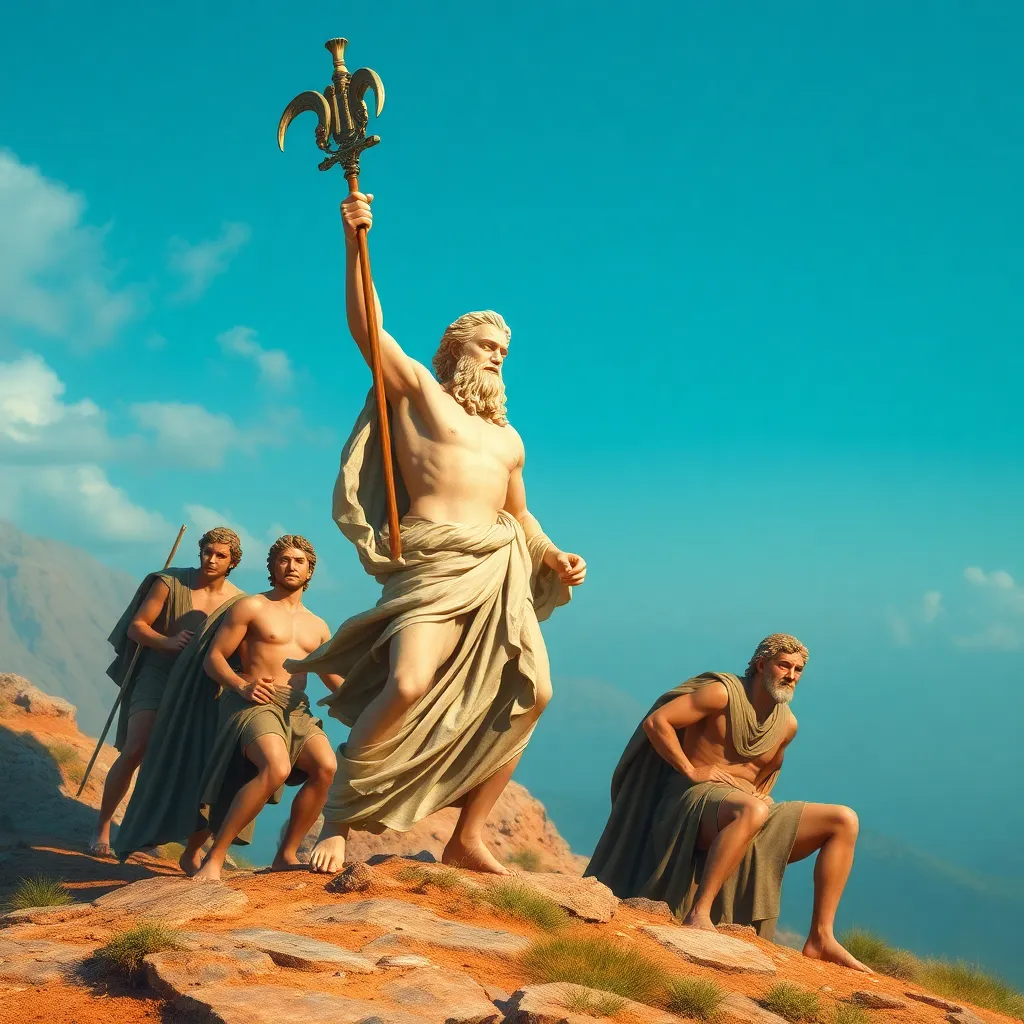The Role of Hermes in the Myths of the Twelve Labors of Heracles
I. Introduction
Greek mythology is rich with tales of heroes and gods, and perhaps none are more compelling than the story of Heracles and his Twelve Labors. Heracles, also known as Hercules in Roman mythology, is celebrated for his incredible strength and heroic feats. However, his journey is not just a solitary one; it is intertwined with various divine figures, most notably Hermes.
Hermes, the messenger of the gods, plays a significant role in the narrative of Heracles. His involvement provides deeper insights into the themes of guidance, communication, and the interplay between divine assistance and human effort. Understanding Hermes’ role enhances our appreciation of the Twelve Labors and their broader implications in Greek mythology.
II. The Mythological Context of Heracles
Heracles is the son of Zeus and Alcmene, a mortal woman, which grants him extraordinary abilities but also subjects him to the whims of the gods. His most notable challenge comes in the form of the Twelve Labors, a series of tasks imposed on him as penance for a crime he committed under the influence of madness sent by Hera.
The Twelve Labors are not merely a test of strength but also serve multiple symbolic purposes:
- They reflect the hero’s journey and personal growth.
- They illustrate the themes of redemption and atonement.
- They highlight the complex relationship between mortals and gods.
Fate plays a crucial role in Heracles’ journey, with the gods often intervening to aid or hinder him, weaving a complex tapestry of divine influence throughout his labors.
III. Hermes: The Messenger God
Hermes is one of the most multifaceted deities in Greek mythology. Known as the messenger of the gods, he is associated with several key attributes:
- Speed and agility, often depicted with winged sandals.
- Intelligence and cunning, embodying the traits of a trickster.
- Guide to the underworld, facilitating transitions between life and death.
His dual nature as both a guide and a trickster allows Hermes to navigate the complexities of the mythological world, making him an essential figure in many narratives, including that of Heracles.
IV. Hermes’ Involvement in the Twelve Labors
Throughout the Twelve Labors, Hermes appears at critical moments, providing assistance to Heracles. Some notable instances include:
- In the labor of capturing the Golden Hind of Artemis, Hermes offers guidance on how to approach the elusive creature.
- During the labor of obtaining the Erymanthian Boar, Hermes helps Heracles find the beast and teaches him how to outsmart it.
- In the final labors, Hermes assists with the retrieval of the cattle of Geryon, using his skills to navigate obstacles efficiently.
These interventions highlight the significance of divine support in Heracles’ journey, illustrating how even the mightiest of heroes can benefit from guidance and assistance.
V. Symbolism of Hermes in Heracles’ Labors
Hermes embodies various symbolic elements within the narrative of Heracles:
- As a symbol of guidance, Hermes represents the importance of having mentors and allies in the pursuit of one’s goals.
- His associations with commerce and communication reflect the necessity of strategy and intelligence alongside brute strength.
- Through his role, Hermes illustrates the theme of overcoming obstacles, emphasizing that success often requires cleverness as much as strength.
VI. The Interaction between Heracles and Hermes
Key moments of interaction between Heracles and Hermes reveal much about both characters:
- Their initial meeting sets the tone for a relationship based on mutual respect and understanding.
- Hermes often reassures Heracles during moments of doubt, reinforcing the hero’s resolve.
- Through their exchanges, Heracles grows not only in strength but also in wisdom, learning to balance power with intellect.
This dynamic not only enriches Heracles’ character but also invites philosophical reflections on the nature of heroism and the value of divine guidance.
VII. Cultural and Literary Impact
The relationship between Hermes and Heracles has been explored in numerous ancient texts:
- In works like “The Argonautica” and various plays, their interactions are depicted as crucial turning points in Heracles’ journey.
- Later interpretations in art and literature often highlight the duality of Hermes as a helper and a trickster, showcasing the complexity of their relationship.
- Modern retellings of mythology continue to draw on these dynamics, emphasizing the relevance of their partnership in contemporary narratives.
The legacy of Hermes and Heracles endures, influencing various artistic and literary creations throughout history.
VIII. Conclusion
In conclusion, Hermes plays a vital role in the Twelve Labors of Heracles, serving as a guide, helper, and symbol of ingenuity. His interventions are not just acts of assistance but are integral to the development of Heracles as a character. The interplay between divine assistance and human endeavor is a central theme in Greek mythology, and Hermes’ contributions epitomize this relationship.
The story of Heracles, enriched by Hermes’ presence, continues to resonate, reminding us of the importance of guidance and support in overcoming life’s challenges. As we reflect on their partnership, we gain valuable insights into the nature of heroism and the enduring significance of myth in understanding the human experience.




